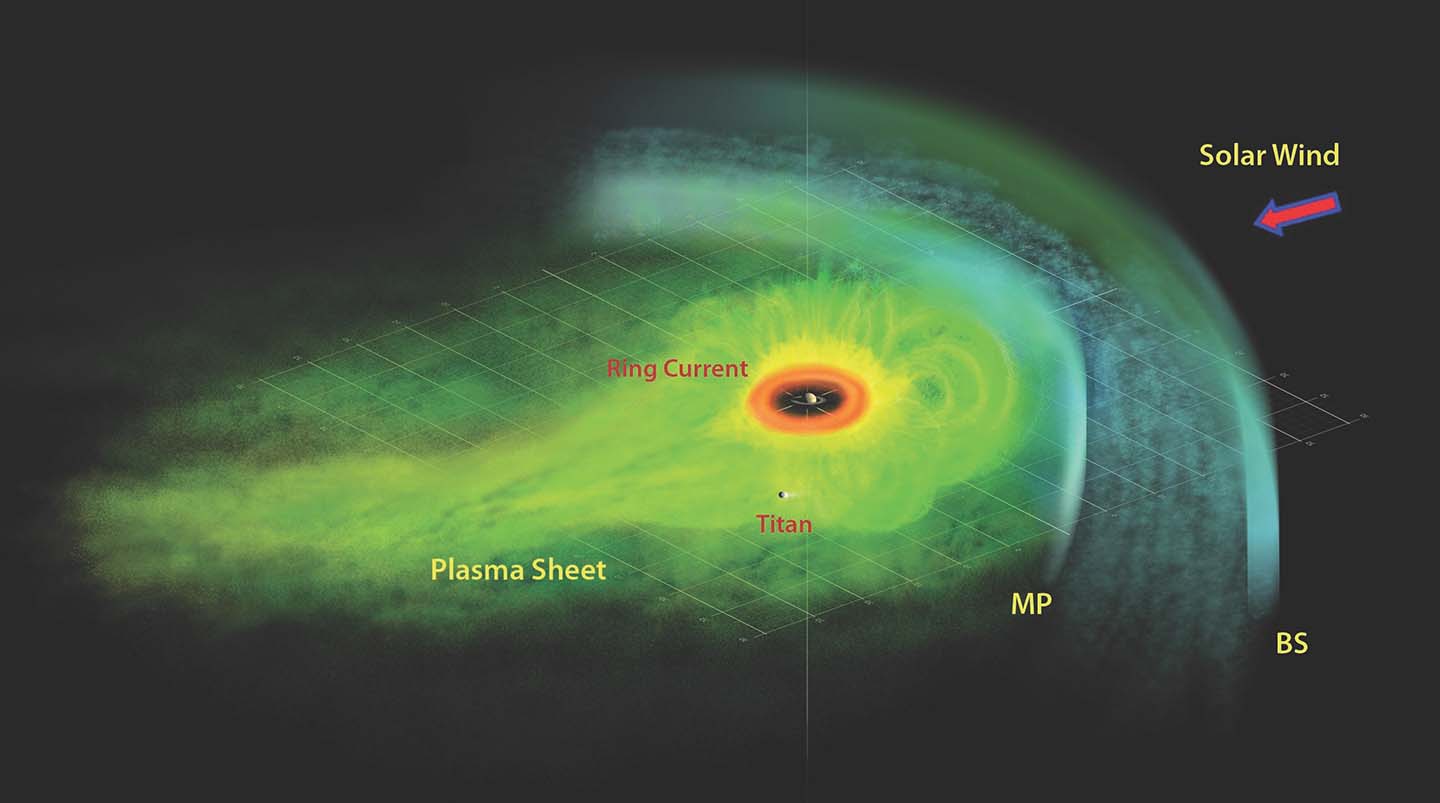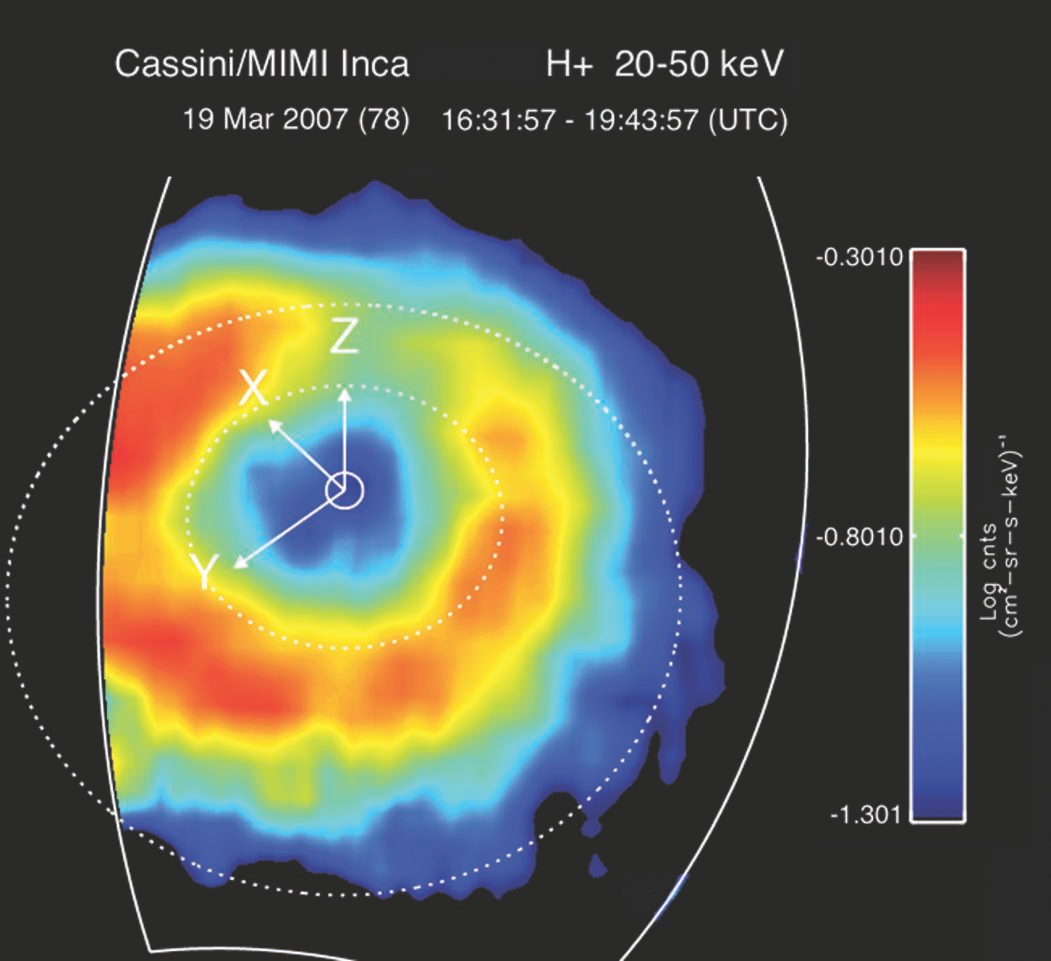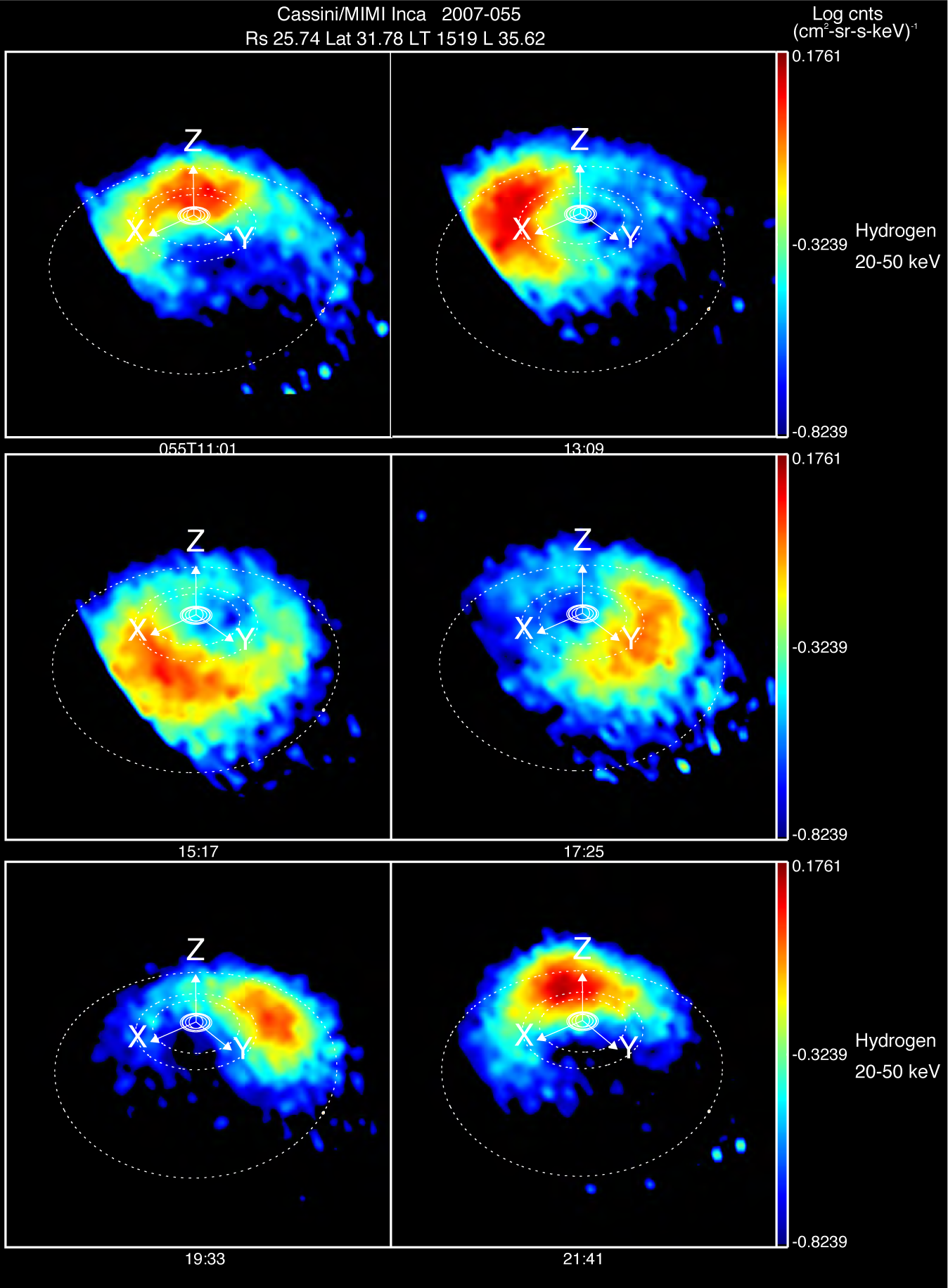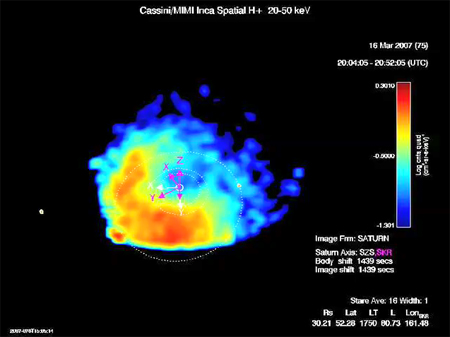Press Release
Cassini Captures Best View Yet of Saturn's Ring Currents
Wed, 12/12/2007 - 09:10
Scientists have gotten their best "look" ever at the invisible ring of energetic ions trapped in Saturn's giant magnetic field, finding that it is asymmetric and dynamic, unlike similar rings that appear around Earth.
Using the Magnetospheric Imaging Instrument on NASA's Cassini spacecraft, a team led by Dr. Stamatios Krimigis of The Johns Hopkins University Applied Physics Laboratory (APL) discovered that Saturn's ring of energetic ions — called a "ring current" — is a warped disc that is deflected by the solar wind out of the equatorial plane on the planet's night side and thickens dramatically on the day side. The images were obtained by a unique camera that Krimigis says "visualizes the invisible" and show the plasma and radiation belts in Saturn's environment.
In the Dec. 13 issue of the journal Nature, Krimigis' team describes how Saturn's ring current changes over time; it's a dynamic system, doughnut shaped but sometimes appearing like someone took a bite out of it. They also found that Saturn's ring current is persistently asymmetric — unlike Earth's — and it rotates closely in-step with Saturn itself. Ring currents form when hot ionized gas (known as plasma) becomes trapped on a planet's magnetic field lines. The main source of the plasma that forms Saturn's ring current is material from the gas vented by geysers on the moon Enceladus.



